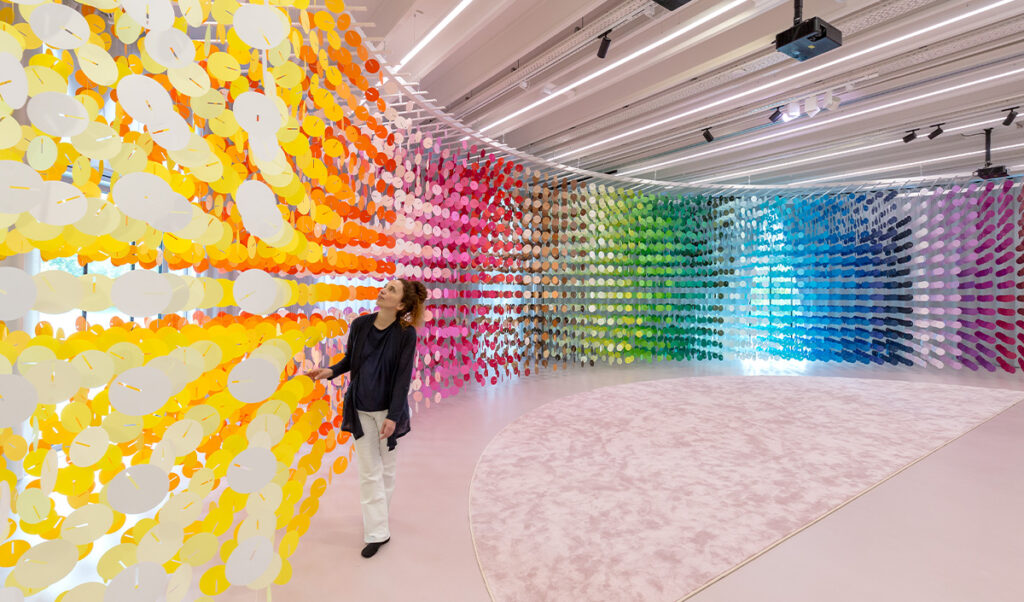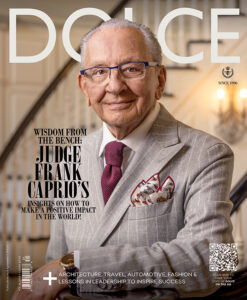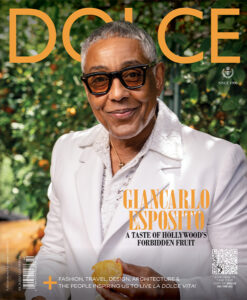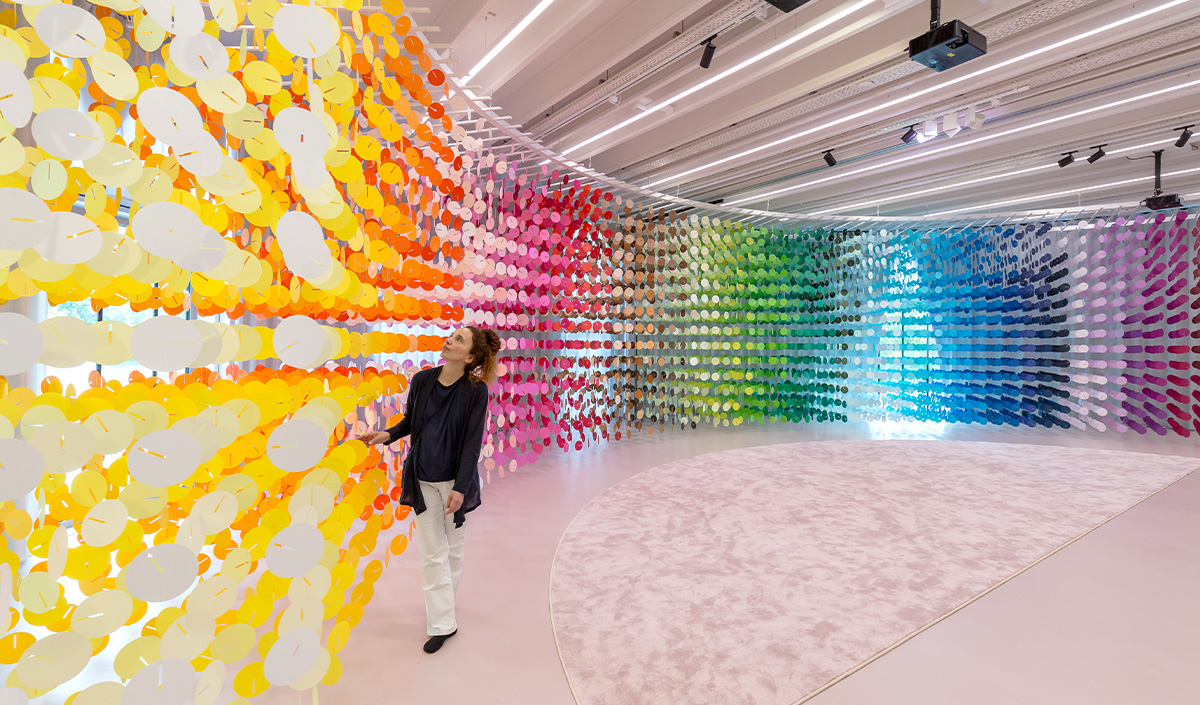Emmanuelle Moureaux: Life in Colour

Begun in 2013, Emmanuelle Moureaux’s ‘100 colors’ is an art installation that uses colour to form space. Recently, the 45th addition to the series was on display in Almere.
It was in Tokyo that French architect, artist and designer Emmanuelle Moureaux found the inspiration for “100 colors.” As a project that seeks to recreate the emotions she first felt when seeing the city’s overflowing colours in 1995, it’s a longstanding commitment to sensorial discovery.
Today, 28 years later, a piece of Moureaux’s work just finished being displayed in the Netherlands for the first time. Titled no.45 “8760 hours,” it was installed at Almere’s Art museum M. in its round pavilion. The installation itself was made up of 8,760 paper clocks in 100 colours, with each clock representing a single hour – in total a year’s worth of time. The paper appears to move, like hands on a clock, as visitors walk through it.
On her site, Moureaux talks of the “overwhelming number of store signs, flying electrical cables and flashes of blue sky framed by various volumes of buildings” she saw in Tokyo, and the complexity it created in terms of depth and intensity. It’s those feelings and discoveries Moureaux wants to replicate.
“M. experiments with making art accessible to become a museum where everyone feels at home. Almost everyone can see colour, but what colour does to you is very personal. Emmanuelle Moureaux’s installations demonstrate this time and time again,” says Olga Ruitenbeek, the M. museum’s artistic director.
“With 100 colors no.45 ‘8760 hours’ we want visitors to look differently at their environment. The effect of the explosion of colours in which the visitors find themselves will be taken outside afterwards. It will allow them to look differently at the colours around them.”
As a museum dedicated to immersive and landscape art, M. is a fitting home for the next iteration in the series. It strives to be a welcoming space for everyone and a place to meet and spark creativity.
“ALMOST EVERYONE CAN SEE COLOUR, BUT WHAT COLOUR DOES TO YOU IS VERY PERSONAL”
The exhibition is a realization of “shikiri,” a design concept Moureaux coined to fit the work she was doing. Translating to “dividing space with colour,” it emphasizes the transformative power of her work. After coming up with the term she began her exploration, looking at both “surface” shikiri, inspired by traditional Japanese spatial elements like sliding screens and, eventually, thinner “line” shikiri.
The work follows a number of other versions of the series installed in other cities. Whereas no.38 was displayed in Nagoya, Japan, no.4 was hosted by Carnegie Mellon University in Pittsburgh.
They also all explore different themes. No.37, installed in Oslo Public Library between June 2022 and May 2023, celebrated the written word. It was composed of 10,000 alphabet letters, including a to z and Norwegian special characters, to represent a book floating in space. No.23, set up in downtown Dubai in 2018, was part of the Art Emaar program, and was made up of 10,000 pieces of hand-dyed fabric.
With the ‘100 colors’ series yet to reach its halfway point, there’s a lot of colour and creativity to come. While we don’t know what city future installations will be hosted in, or what they will explore, we can expect them to offer an emotional, sensorial lens with which to see the world.















































































